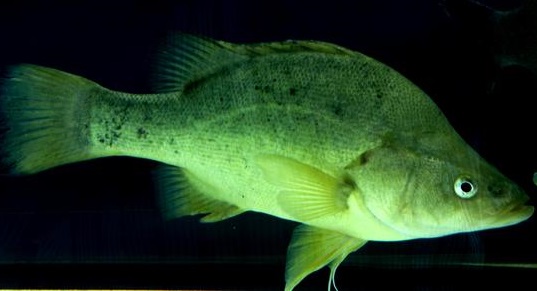 Fish farms can be small scale employing only one person; or larger scale
employing dozens. Most people who have previously made a successful
career from fish farming, are self employed, owner operators. Some fish
farmers have become millionaires. Others struggle at times, like many
other farmers.
Fish farms can be small scale employing only one person; or larger scale
employing dozens. Most people who have previously made a successful
career from fish farming, are self employed, owner operators. Some fish
farmers have become millionaires. Others struggle at times, like many
other farmers.
Aquaculture can be farmed in salt water (mariculture) or in fresh water. Other animals and plants are also farmed in water (eg. crayfish, oysters, prawns, seaweed for sushi).
Broadly speaking there are four types of Fish Farms:
- Salt water farming in salt water in cages (eg. tuna in floating caged areas in the sea)
- Salt water farming in on shore ponds or tanks (eg. salmon, prawns, oysters)
- Farming salt water muscles, oysters, pearls, etc in esturine areas
- Farming freshwater fish in tanks or ponds
- Aquaponic farms –Here freshwater fish are grown in water runoff from hydroponic beds. The farmer harvests plant produce (eg vegetables) from the hydroponics which is fed by nutrients extracted in part from fish excrement.
Work can involve construction of ponds, cages or other infrastructure, supply and management of water, feeding the fish, monitoring health, responding to health problems, maintaining equipment (eg. machinery, pumps, etc), harvesting, post harvest processing, treatment and storage and marketing

Where Do they Work
Fish farms can be small scale employing only one person; or larger scale employing dozens. Most people who have previously made a successful career from fish farming, are self employed, owner operators. Some fish farmers have become millionaires. Others struggle at times, like many other farmers.
Fish farming requires clean unpolluted water. It can work in any coastal area, if you are growing appropriate species, but it will usually be better away from major population centres. Rivers that flow through agricultural or industrial area are prone to contamination from pollutants; and that can affect the suitability for aquaculture. Inland areas that have a reliable and plentiful water supply (eg. From melting snow, underground water etc) can be very well suited to aquaculture.
Opportunities and Risks
The demand for fish has been increasing steadily, while the supply of wild fish has been in decline. The likelihood of aquaculture remaining a boom industry well into the future is high. There is uncertainty about exactly what will be grown, how it will grow and what the career opportunities might be.
COMMERCIAL AQUACULTURE SYSTEMS
Aquaculture systems are generally confined environments, where growing conditions have been optimised to support more animals in a given space, than what might occur in nature. One problem is that when fish (or other animals) are grown at such close quarters, competition can be strong, and often cannibalisation may become an issue.
Commercial systems therefore need to separate small or developing animals from larger ones.
As such, pisciculture systems tend to be one of three types:
1. Hatchery Systems that produce fertile eggs, larva or fingerlings.
2. Nursery Systems that nurse small larvae to fingerlings or juveniles.
3. Grow-out Systems that grow fingerlings or juveniles to marketable sizes.
What Fish are Farmed
There are hundreds of different fish, both salt and freshwater types, that have been farmed successfully. The type of animal that is best for you to farm will depend upon many factors; ranging from your environment and water resources available through to what is in demand and marketable in your area. Certain species (eg. Tuna, Salmon and Trout) are in high demand and grown widely; but competition may be strong for species that are being produced widely and on a large scale. For new, small scale operations, it may be more viable to target a niche market that is not very well catered for, and farm a less commonly grown species which you may be the only one growing.
Consider a more Widely Grown species first though -Rainbow Trout
The Rainbow trout (Onchorrhyncus mykiss) is one of the most widely introduced species in the world. It is a major recreational fish worldwide. It is also widely cultivated for commercial food production. It prefers a range of 10-22°C with a low critical range of 0-9°C and an upper critical range of 22-30°C
- Rainbow trout are known to reach 1.2 metres in length and 18 kilograms in weight in native North America. The best measurements known in Australia are 70 centimetres and about 9 kg.
- They are carnivorous: young eat aquatic and terrestrial invertebrates with worms, molluscs and crustaceans; adults feed on small fish such as Pigmy Perches, Goldfish and Galaxids.
- Breeding season is normally winter and early spring but spawning can occur from May to October.
- Females can produce up to 1,500 eggs per kg of body weight which are laid in a gravel substrate.
- Hatchings can occur in 3 to 12 weeks.
- The Impacts of introduction in non-native locations are: hybridization, competition for food resources with native species, disease transmission and predation.